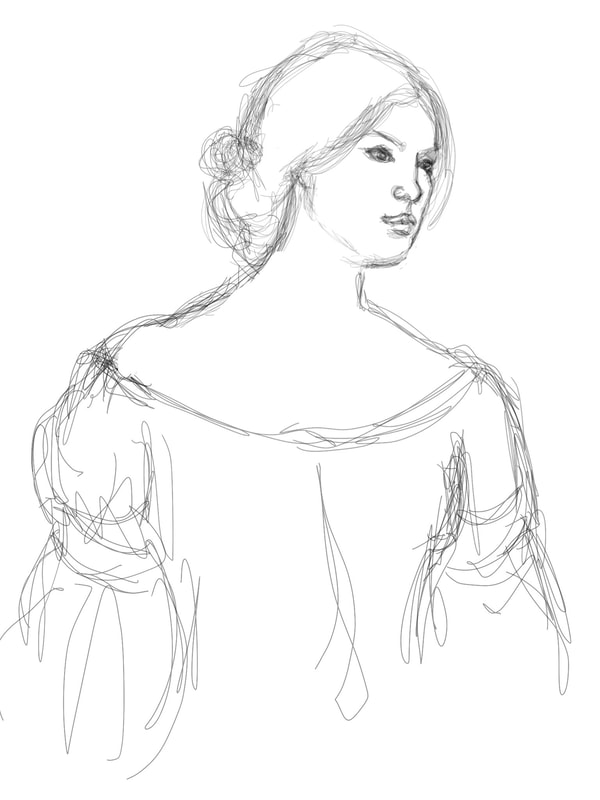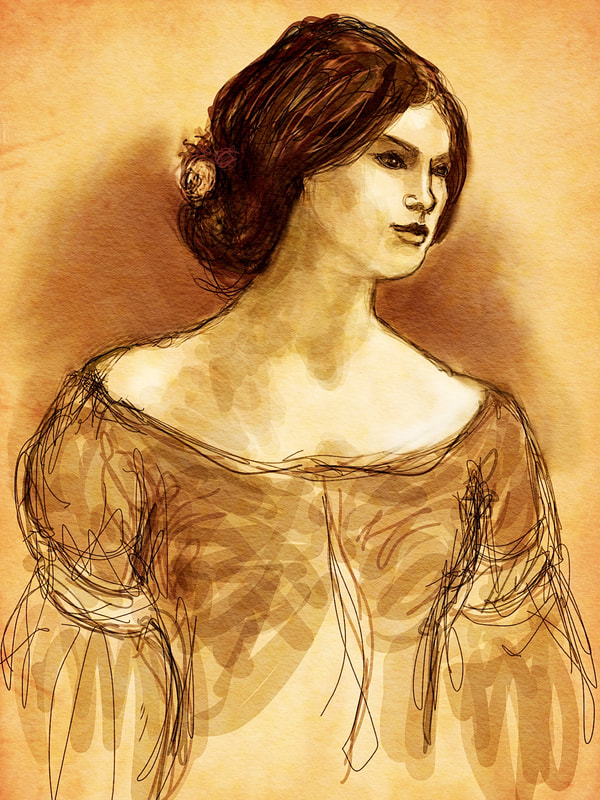The best way to slow down in front of a work of art and to actually remember it after you leave? Draw it, even if all the museum allows is one of those tiny "putt-putt golf" pencils. Here, sketching on a mobile device becomes a real plus, as you are carrying an entire studio with you. I count three ways to approach the artwork: analytically, intuitively, and both. I believe the greatest artists, such as da Vinci and Michelangelo, approached their own work using both analysis and intuition, but most of us lean strongly one way or the other. Each method has advantages and disadvantages. The intuitive approach leads to greater spontaneity, but less accuracy; the analytical to more precision, but less fluidity. Combine the two, and you do indeed have the potential to become a great master.
Personally, I lean strongly toward the intuitive. As I have always said, show me a preparatory sketch by a great artist and the finished work, I will choose the sketch every time. I love seeing the artist's mind and instincts at work. I consider myself a journeyman draftsman, so to speak, who has an occasional breakthrough of brilliance, and then wonders, "How in the world did I create THAT!!!???"
Currently, in the midst of the pandemic, I find I am in one of the high risk groups for complications from the virus. Even though the local art museum has reopened, albeit at 25% capacity, prudence dictates I stay home. So, I googled one of the old masters, John William Waterhouse (1849-1917). Not a name the average person knows, but if you love the pre-Raphaelite painters, he is a must-see. Being more interested in drawings, rather than paintings, I found his Study for the Lady Clare, done in chalk and paper. Spending a little over an hour on my iPad, Apple Pencil in hand, I became absorbed in this lovely piece. The resulting sketch is in no way an exact copy, but I so enjoyed working on it. Here is the result. On the left, my 18-minute beginning, on the right further developed, total time a little over an hour.


 RSS Feed
RSS Feed